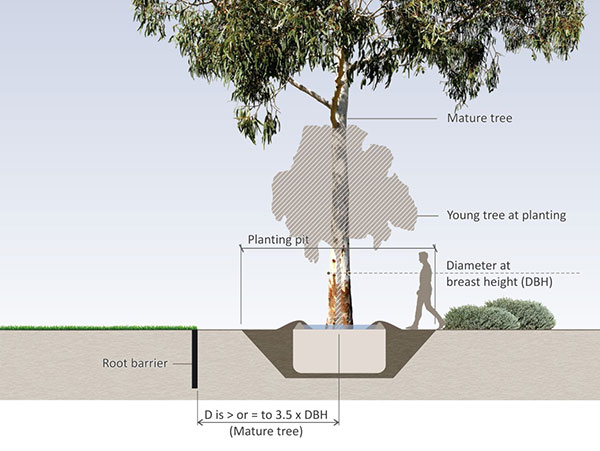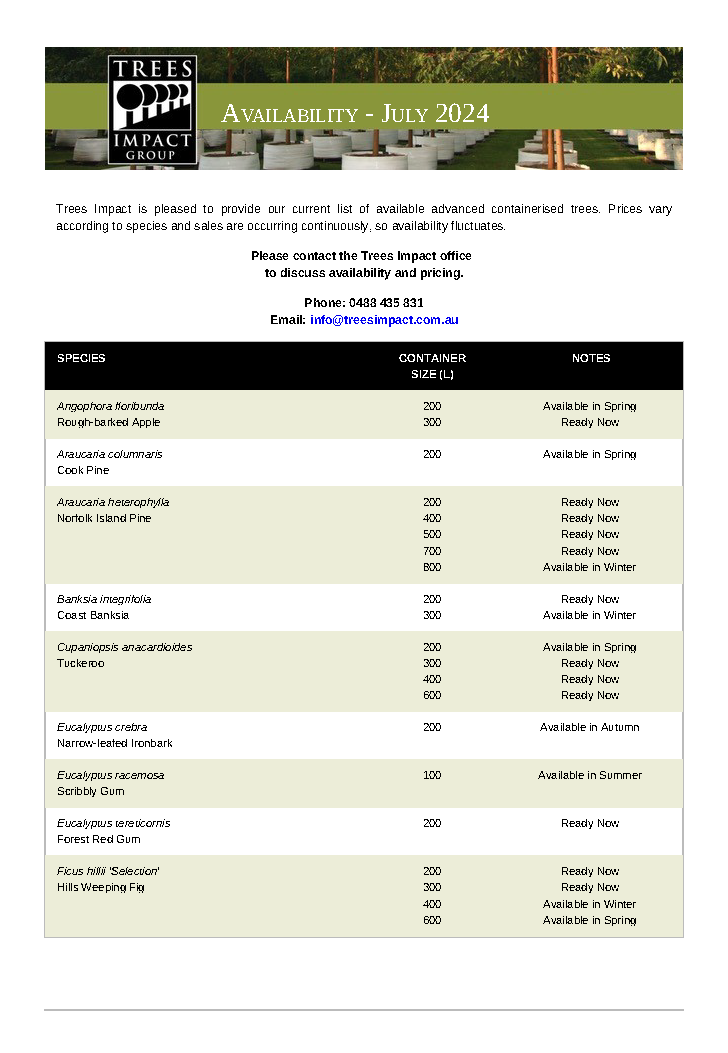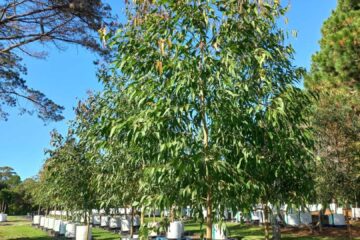Where to put Tree Root Barriers?
THE PROBLEM
Tree professionals are charged with the task of ensuring that the trees installed into our urban landscapes have the resources they need to thrive and be safe for the long-term. But, they are also frequently asked to install root barriers so that the developing roots will not adversely impact on nearby engineered structures.
After major storm events, we regularly see images and read about trees falling down and the risk to life and property that results. If you look closely at the photographs and newsreels you will notice that, in the vast majority of cases, the trees that come down are adjacent to paths or structures and have had their root systems compromised. Commonly this arises because, by being planted too close to engineered structures, natural root development has been severely restricted and the tree’s own engineering undermined.
In the same way, properly installed root barriers restrict root development and also have the potential to destabilise trees. The closer the barrier is to the trunk of the tree, the more the stability of the tree is compromised. So, the placement of any root barrier must not unduly restrict the soil volume the tree can access or be placed too close to the stem thereby creating an unbalanced and potentially unsafe root plate.
The question is: “How close can we go?”
A SIMPLE FORMULA
Simple, logical guidelines are needed to help estimate the minimum “safe” distance to be away from the tree before even considering installing a root barrier. Armed with such a tool, our engineers, architects, designers, and landscapers will be encouraged to allocate sensible tree spaces and build them into their plans at the design stage.
The logical place to turn for guidance is the Australian Standard AS 4970:2009 “Protection of trees on development sites.” This standard talks about the Structural Root Zone (SRZ) and describes it as “the area required for tree stability” (as opposed to the maintenance of the health and wellbeing of the tree).
If we at least provide for the SRZ when installing root barriers, it seems logical that we will probably also contribute to the long-term stability of the tree. Adjusting the SRZ formula in exactly the same way as described in one of our earlier articles (‘Estimating the Zone of Upheaval’) allows the creation of the following simple formula for estimating the minimum distance from the tree that root barriers can sensibly be placed:
Minimum distance to root barrier* = 3.5 x DBH** (or a minimum of 1.5m if that is greater than the calculated figure)
* Minimum distance from the centre of the stem of the tree to the root barrier
** DBH = Estimated Diameter of the Tree at Breast Height when mature. [See: ‘Estimating Stem Diameter at Breast Height of Mature Trees‘]

Note: This is put forward as a rule of thumb to estimate the minimum distance a section of root barrier might sensibly be placed adjacent to a tree. It is a guide only and should not be regarded as an exact measurement. Use it to test whether the root barrier you plan to install will approximate or, preferably, exceed the estimated minimum distance required.
RATIONALE
The formula for the Structural Root Zone in AS4970:2009 is: [SRZ radius] = (D x 50)0.42 x 0.64. This is a bit complicated for general use. We have worked through it and suggested a more workable version of this formula in our earlier article regarding the zone of upheaval (Estimating the Zone of Upheaval’).
In that case, we were looking at the minimum distance from structures for planting trees – to reduce the chance of tree roots damaging those structures. So, whether limiting damage to structures caused by trees, or limiting essential root development by having root barrier (or structures) too close to the tree, the same considerations arise and the same formula can be applied.
Note: With climate change and the frequency of storms, the potential for tree failures will increase. Use the following checklist to ensure you don’t create unacceptable risks of tree failure by placing root barriers too close.
- Does the distance from the tree to the root barrier approximate or, preferably, exceed the minimum distance suggested by the formula above?
- Following the installation of your root barrier:
- Is the soil volume accessible to the tree appropriate? To find out, visit ‘Estimating Soil Volumes for Trees in Urban Situations’
- Will the root plate be reasonably well balanced?

